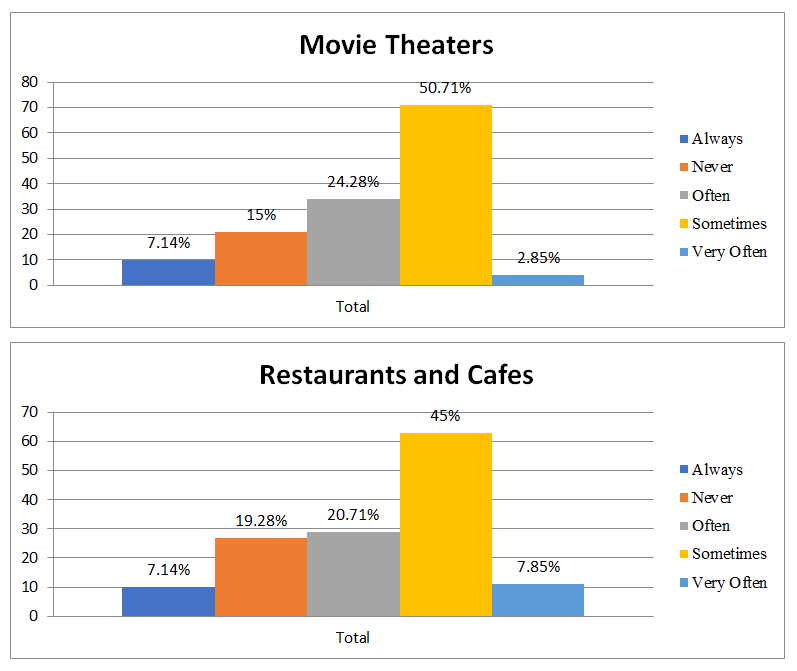Objectives of the study:
- Estimate public awareness and perception of public restrooms.
- Know the rate of use of public restrooms.
- Know the problems that people face to access a public bathroom.
- Know the level of satisfaction with the cleanliness of public restrooms.
- Study that public restrooms are designed and maintained to meet community expectations and that they are safe and attractive to use.
- Understand how the lack of toilets in public spaces affects people in India and also people who travel to India.
- Know if it is worth using public restrooms or not.

Scope of the study:
The purpose of our study is to understand the public’s perception of public restrooms and how satisfied the public is with the cleanliness of public restrooms. We also focus on whether long-term improvement programs like the Swachh Bharat Mission lead to the installation of enough public toilets in India and how the lack of toilets affects people in India.
We have collected responses across India during the period June to July 2020, where our sample size is 140 respondents.
Safe sanitation is an important parameter for a clean environment as well as for ensuring public health and hygiene. It also plays a vital role in the economic development of society. Access to essential basic facilities, such as toilets for all, is a minimum requirement for safe sanitation. To eliminate open defecation by 2019, the national flagship program, Swachh Bharat Mission (SBM-Urban), launched by the Government of India in urban areas, has made remarkable progress.
In the process of achieving the overall goal of SBM, several innovative concepts have evolved and emerged to increase access to toilets.
In this project, we discuss the methodologies used to maintain the cleanliness of open restrooms and the proposed facilities for specially disabled people. One of the best possible methods to prevent open defecation is to first provide infrastructure facilities where needed. Mainly in the north side of India, open defecation is considered no different. They are mostly men who prefer open defecation. The next thing is to maintain the infrastructure so that visitors can use it efficiently and effectively.
Many issues need to be addressed to keep restrooms open properly. First and foremost is proper and frequent cleaning of open restrooms. Although the municipality has taken many steps to improve the maintenance of open restrooms, it is still not maintained as expected. Now, they have even started using the latest technologies to achieve this. While workers are available or trying to perform their duties properly, the most significant difficulty they face in many places is the availability of sufficient water to clean toilets.
Recommendations:
- The availability of public latrines can be increased and the government should ensure that latrines are located every 5-6 km.
- Effective campaigns to stigmatize public toilets.
- Explain the consequences of human use, sanitation, and unsanitary conditions.
- We believe that if the government provides more public toilets, people who are constantly unable to go to work and beg will be employed.
- Public toilets, especially if poorly maintained, can lead to the spread of certain diseases.
- In 2020, during the COVID-19 pandemic, COVID-19 became known to spread not only through respiratory droplets but also through aerosol particles that would remain dormant for some time.
- Public toilets have several access points: door locks, washbasins, and faucets, which need to be cleaned periodically. PHLUSH, a non-governmental organization, has published guidelines for the safe opening of public toilets. This includes, for example, “Installing hand hygiene stations in the bathrooms at the entrance and asking them to clean their hands before entering to prevent surface contamination.”
- We also recommend eliminating forced ventilation that spreads viruses and bacteria into the room.
Limitations of the study:
No one in this world is perfect. This is a tendency to make mistakes. During the study of the subject, special care was taken to gather the best information, but some things went out of control. Below are some of the limitations of the study:
- The survey should not be considered complex, as it is possible to contact a limited number of respondents due to time constraints.
- The goals and objectives of the study, as well as the questions to be explained to the respondents, and their answers, may be one-sided.
- Some respondents were reluctant to respond.
- Only a limited sample size is considered for the study, and the conclusions drawn from it may not reflect the general population.
- Research is limited by the COVID-19 pandemic.
Conclusion:
The study was conducted to design solutions for effective public toilets in cities. The study achieved its goal by fully analyzing and determining the course of the use of public toilets and user satisfaction and how the lack of toilets in public places affects people. The results of the study show that urban markets, highways, tourist attractions, etc. Also, toilets should be clean and hygienic and placed every 5-6 km distance. The report concludes that the government can take several steps based on the recommendations. The government should adopt some recommendations to ensure that public toilets operate as instructed.
Download the complete DESIGN SOLUTION FOR EFFECTIVE PUBLIC TOILETS IN CITIES MBA Project Report. This Analysis of the Public Toilet Facilities in India Project can be useful for students to make their Final project report.
